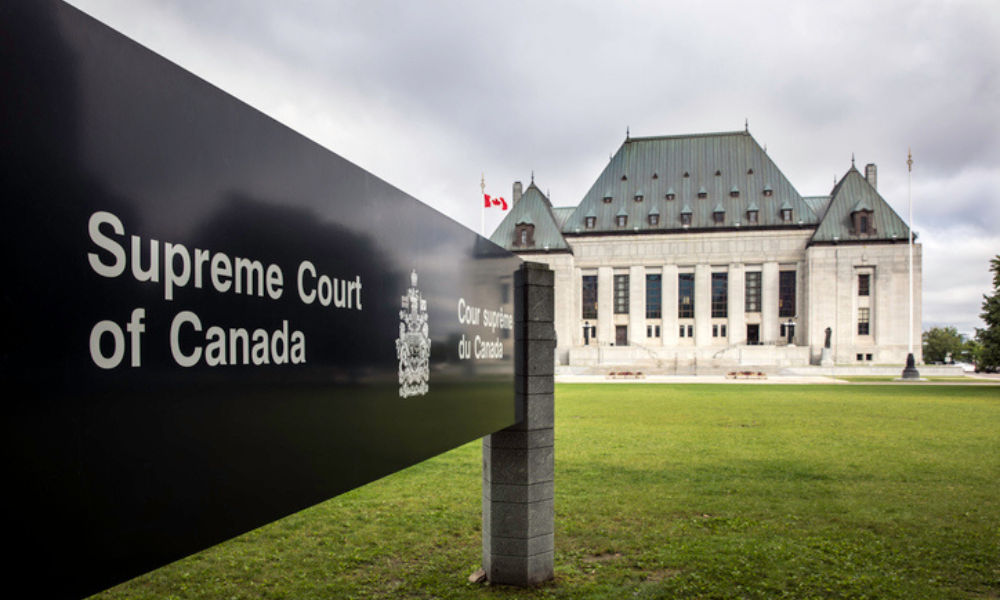Evaluation of the implications of the Sudbury decision


There has been quite a bit written about the Supreme Court decision in R. v. Greater Sudbury (City). The decision was made in November of 2023. It has been branded a gamechanger, but I am not sure.
It took me a while to get around to reading the decision. It is a long one, but an interesting case. It does have lessons that health and safety practitioners should pay attention to in several areas.
The case is about employers, contractors, and due diligence. Not so much the last one, but I find people strangely perk up at the most famous safety buzzword.
What happened
The City of Sudbury hired a contractor to do some paving work. A woman entered the worksite and, as she crossed a street, was struck by a grader and fatally injured.
An investigation led to the contractor and the City of Sudbury being charged under the Occupational Health and Safety Act.
The City indicated they had no control over the worksite and were not the employer. The City argued that they were not the employer, but even if they were found to be the employer, they had acted with due diligence. It was a successful argument, and the City was acquitted, while the contractor was convicted and fined $195,000. The provincial court judge determined that even if the City was the employer, it had acted with due diligence.
The decision was appealed and upheld at the first level of appeal. However, the appeals court ruled that the City was the employer and sent the question of due diligence back to the provincial appeals court.
The matter was appealed to the Supreme Court of Canada. The Supreme Court agreed that the matter of due diligence should be remitted to the Provincial Court. However, the Supreme Court determined that the City of Sudbury was the employer.
The City of Sudbury was found to have breached its duty under the Ontario Health and Safety Act s25(1)(c), reproduced below.
Duties of employers
25 (1) An employer shall ensure that,
(c) the measures and procedures prescribed are carried out in the workplace;
More specifically, there was a requirement within the regulations to have the area fenced off so the public could not access the active work area.
The City is the employer?
Most health and safety practitioners would immediately question why the City was deemed to be the employer. The Supreme Court decision is very clear.
While control over workers and the workplace may bear on a due diligence defence, nothing in the text, context or purpose of the Act requires the Ministry to establish control over the workers or workplace to prove that the City breached its obligations as an employer under s. 25(1)(c).
The justices go on to explain that the law takes a “belt and braces” approach. Referring to having a system or surety. A belt will hold up pants, but wearing braces ensures they do not fall down.
The law is structured in such a way that companies and individuals may have several sets of responsibilities. So, an owner can be an employer just as a prime contractor may have specific duties but is also an employer. These duties are concurrent, meaning they are in force at the same time, and they overlap in a belt and braces approach.
This is an important concept. The law has overlapping and concurrent duties, and that must sound familiar to health and safety practitioners. On the other side of the law is the Internal Responsibility System—IRS. While the law is often seen as the external responsibility system, the IRS recognizes the same concept and takes a similar belt and braces approach.
The Internal Responsibility System has been with us since the 1970s. It is certainly not new. In organizations with an effective health and safety system, each level has specific responsibilities, including ensuring the next level down meets theirs in a series of overlapping and interlocking responsibilities to ensure the health and safety of the workplace. So, on each side, external and internal, there is balance.
Who was in control?
The quick answer here is that it does not really matter. Control is important in establishing due diligence, which I do not mind saying is a mountain to climb. There is no requirement to prove control over workers, only to prove the offense occurred—and who the employer is.
One can say that there were two employers. A safe statement since the Supreme Court has said so. One could even say that the City of Sudbury did not control the employees doing the work. It was argued that the control is a compelling factor. However, that is the reason for the due diligence defence. The employer’s responsibilities are not absolute, but they are concurrent and overlapping.
The key point is that no matter how well-written and constraining a contract may be, an employer cannot contract away their responsibilities under the law. That can be said of any jurisdiction.
Under the “belt and braces” approach, where multiple workplace entities fail to safeguard health and safety, they cannot point to others’ failures as an excuse for their own; each workplace participant must ensure that the workplace is safe
There were dissenting opinions.
Yes, some of the justices did not agree with the majority opinion described. This is not all that unusual, and the dissenting judges centered their comments around the issue of control. Those judges felt that exercising control as the City of Sudbury in this case would be a duty difficult to fulfill.
The argument was advanced that holding an employer with no control liable does nothing to increase worker safety. The lack of control makes them unable to fulfill their duty as employers properly.
Interestingly, a dissenting judge recognized the employer relationship, opining:
The second branch of the definition [of employer] involves a person who contracts for the services of one or more workers. The second branch prevents parties from removing themselves from the application of the Act where they subcontract out work, rather than directly hiring workers through an employment contract.
The dissenting judges felt that imposing the same duties on the employers was not effective as it made everyone responsible for everything (I am paraphrasing). They argued that there must be a reasonable limit to duties. The due diligence defense was seen to be burdensome.
These dissenting opinions are effectively addressed in the analysis of the decision, as I have already discussed. The employer definition does not include an element of control, but that can be an element of a due diligence defence. An entity can be an employer, owner, contractor and supervisor all at the same time.
The analysis held that the element of control should not be embedded in the definition of employer as that defeats the intent of the legislation and the legal framework on which it is based. In Ontario, control is included in the definition of “Constructor,” which is a role and term exclusive to Ontario.
Gamechanger?
Is this really a gamechanger? Not really. The Supreme Court is reminding us of something that may not have garnered a lot of attention. It bears mentioning that there are decisions that acquitted employers over the years because they did not have the requisite control. Not so anymore.
All of the justices in their opinions (supporting and dissenting) included a reference to an old case and one where I got some of my first exposure to contractor management, R. v. Wyssen (1992). It was a case about a window-washing company hired by a building. There was an incident, and the building owner was convicted even though they did not know anything about window washing as the employer and were relying on Wyssen for that expertise. Wyssen used his own equipment and fell to his death when a rope broke.
The argument was about who was the employer then as well. There were dissenting opinions in the decision at the Court of Appeal in Ontario at that time as well. The same conclusion was reached. Employer duties are not absolute, requiring only to take every precaution reasonable, and the defence of due diligence addressed the issue of control. Anything else would defeat the purpose of the legislation to ensure a safe workplace.
What does it mean?
The focus on contractor management over the past few decades has become about documentary review, and the fact that the entity hiring the contract is also an employer with concurrent and overlapping duties has been pushed aside or forgotten. Maybe it’s time to reconsider that approach. More on that at a later time.
Despite contracts, the employer has legal responsibilities that cannot be simply handed off. Meeting those responsibilities can be onerous, but there is an old saying. Practicing due diligence means never having to say you are sorry because the incidents that would have happened are prevented.





